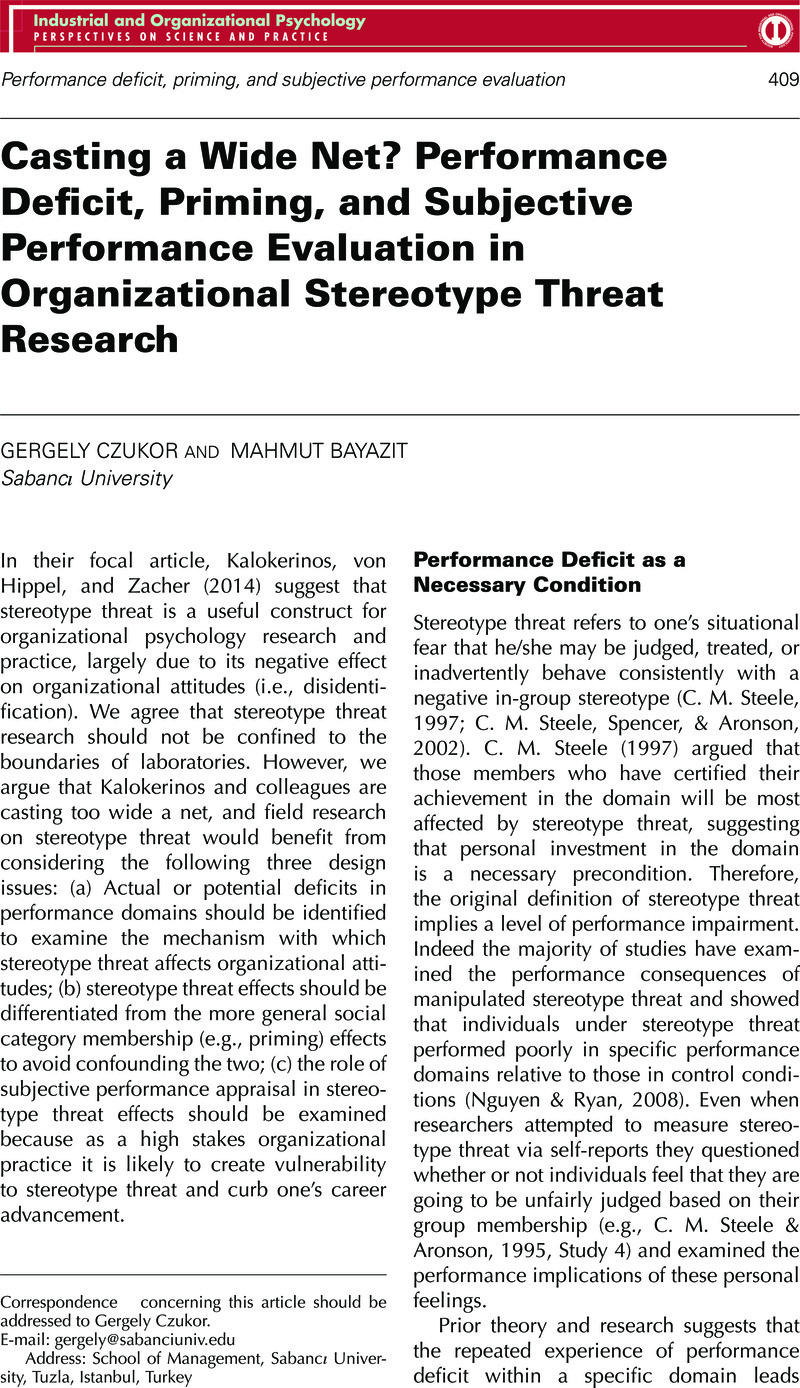Crossref Citations
This article has been cited by the following publications. This list is generated based on data provided by Crossref.
Walton, Gregory M.
Murphy, Mary C.
and
Ryan, Ann Marie
2015.
Stereotype Threat in Organizations: Implications for Equity and Performance.
Annual Review of Organizational Psychology and Organizational Behavior,
Vol. 2,
Issue. 1,
p.
523.





